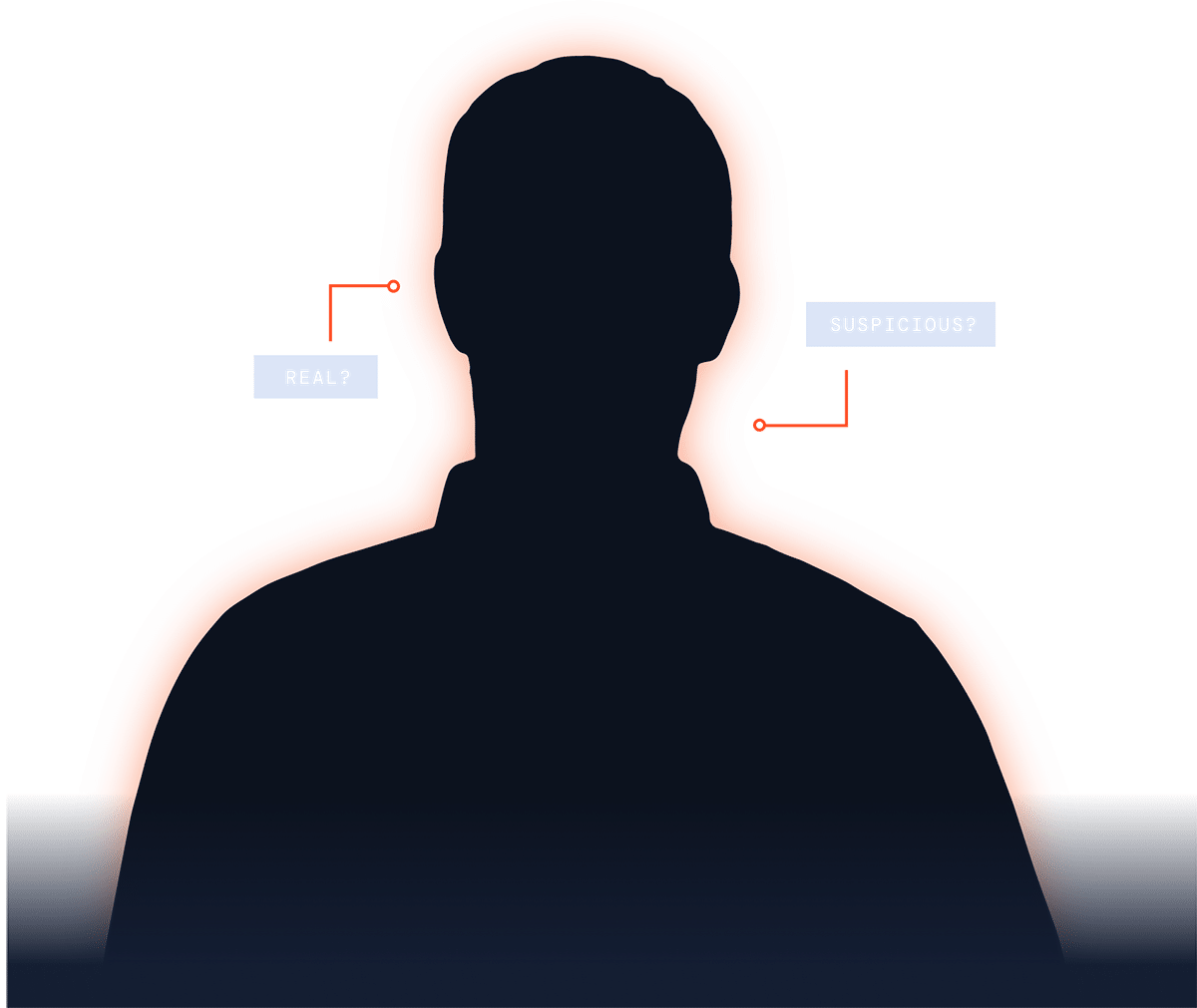Liveness Detection
Fortify Your Business Against Deepfakes
Pindrop’s technology helps Safeguard your business against fraud and trust erosion caused by deepfakes. As synthetic audio becomes more convincing, Pindrop’s deepfake detection secures contact centers by verifying the authenticity of human voices, helping to ensure reliable customer interactions.

Pindrop’s liveness detection identifies deepfake audio by detecting unique patterns, like frequency changes and spectral distortions, that differ from natural speech. Pindrop’s technology uses artificial intelligence to analyze these patterns, producing a “fakeprint”—a unit-vector low-rank mathematical representation preserving the artifacts that distinguish between machine-generated and generic human speech.
7 Key Features
Most comprehensive coverage
Pindrop Pulse liveness detection identifies not only for synthetically generated speech (text-to-speech, voicebot, voice modulation, voice conversion), but also recorded voice replay attacks and modulated voices.
Proprietary Artificial Intelligence Models
Pindrop’s proprietary DNN model, developed over 8 years, distinguishes between human and machine-generated voices, including AI-generated or recorded ones, without relying on watermarking or specific voice-generation tools. Its unique design demonstrates unparalleled accuracy and adaptability.
Proprietary & Unique training dataset
Pindrop Pulse’s proprietary models are trained on a large proprietary dataset of over 20M unique audio utterances and tested on large and diverse datasets including data from 120 text-to-speech (TTS) engines and other techniques for generating synthetic speech.
Language and
phrase agnostic
Spectro-temporal audio features are analyzed to assess whether the speaker is a real human being or if the voice is machine-generated or replayed and not what is actually being said. This maximizes the effectiveness of performance and accuracy universally.
Industry Leading Research
Pindrop has over 18 patents filed or granted in deep fake and synthetic voice detection in addition to over 130 granted patents in the area of voice security. Our peer-reviewed publications on voice spoofing detection received nearly 380 citations in the research community. Our publications on voice security have received over 1,000 citations.
Institutionally and Academically Benchmarked
Industry-recognized and academically validated ASVspoof sets the standard for evaluating speaker verification technologies and countermeasures against spoofing. Pindrop has excelled in every ASVspoof challenge since 2017, for both logical access and physical access defenses
Continuous Enhancements For Deepfake Evolution
Pindrop Pulse’s deepfake detection technology is designed to allow continuous delivery and release of improvements to our customers, enabling them to stay current on the latest release without worrying about system upgrades.
In today’s digital-first environment, businesses depend on remote interactions for critical services like financial transactions, insurance claims, healthcare consultations, and retail interactions. However, verifying identities remotely poses a challenge, especially with the rise of audio deepfakes that allow bad actors to impersonate real customers at scale.
Organizations can expect to see the following 4 types of deepfake attacks:
Speech
Synthesis
A fraudster typically listens during the call and uses a text-to-speech (TTS) engine to generate responses by typing, aiming to impersonate a user with synthetic speech that convincingly resembles a real person’s voice. Occasionally, clones of the target user’s voice are created.
Automated Voice Chatbot
Fraudsters use chatbots and voice models to replicate a real person’s voice and behavior, scaling attacks to probe user accounts across financial institutions, bypass verification, modify user profiles for fraud, and sometimes manipulate call center agents.
Recorded
Voice Replay
Voice
Conversion
An attacker modifies their voice in real-time to mimic someone else through a model that processes voice inputs. This makes it difficult for humans to detect due to the authentic-seeming mannerisms, thus highlighting the necessity for deepfake detection technology.
Relevant Resources

Elevate Your Security with our Pindrop Pulse® technology, backed up with the Pulse Deepfake Warranty
Gain peace of mind and robust protection against synthetic voice fraud with Pindrop Pulse, backed by the confidence of up to a $1 million warranty.*
* Terms and conditions apply. Minimum subscription required. Warranty reimbursement is dependent on the company’s annual baseline subscription call volume up to the applicable reimbursement cap for the warranty period. Refer to the Pulse Warranty Agreement for more information.
